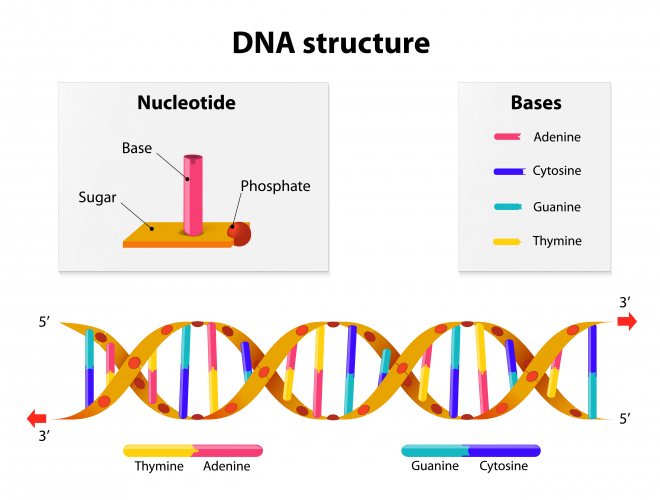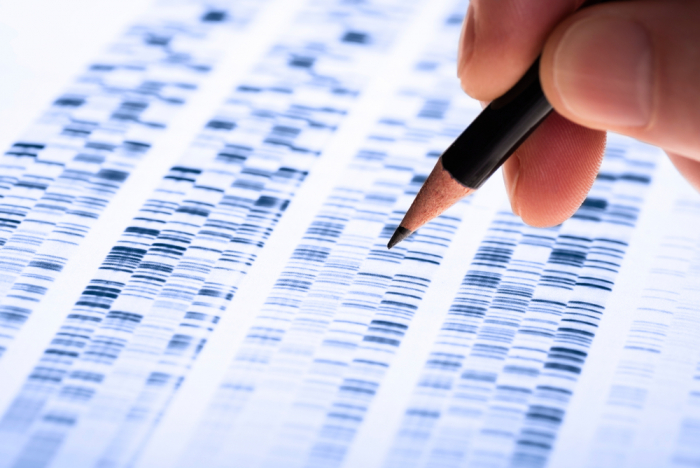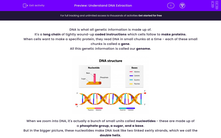DNA is what all genetic information is made up of.
It's a long chain of tightly wound-up coded instructions which cells follow to make proteins.
When cells want to make a specific protein, they read DNA in small chunks at a time - each of these small chunks is called a gene.
All this genetic information is called our genome.

When we zoom into DNA, it's actually a bunch of small units called nucleotides - these are made up of a phosphate group, a sugar, and a base.
But in the bigger picture, these nucleotides make DNA look like two linked swirly strands, which we call the double helix.
Being made of lots of small units makes DNA a polymer.
.jpg)
Nucleotides join up through their bases.
They can have any one of the bases:
Adenine
Thymine
Cytosine
Guanine
but these bases are very fussy about what they pair with:
A goes with T and C goes with G!!!
These groups are complementary base pairs, and what joins the double helix strands together is the weak hydrogen bonds between the bases in the middle.

EXPERIMENT TIME
Knowing about DNA, means that scientists can play around with it too - like taking a piece of DNA out of fruit cells!
Let’s use a banana:
1. Peel it and mush it up.
2. Add a little salt and a bit of washing up liquid.
3. Heat at 60°C gently for 5 minutes.
4. Filter the mix and only keep the liquid.
5. Cool in an ice bath and then carefully pour cold ethanol on top of it.
And voilà! You should see bits of DNA with bubbles in them where the banana and ethanol meet!

But, you got me, it’s not bananas that scientists really care about - it’s genetic profiling!
In our genomes, there are combinations of DNA that are very specific to us that can be used as a passport.
If we use what we know to extract small, unique bits of DNA from humans, we can make a unique profile of DNA bands for every person.
This method is a lifesaver. It has helped us to determine paternity, by comparing DNA between parents and a child. It is also used to help to solve crimes!
Are you ready to have a go at some questions now?








